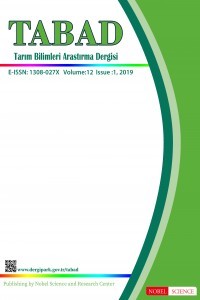Basınçlı Sulama Sistemlerinin Su Kaynaklarının Etkin Kullanımındaki Rolü ve Mali
Desteklerin Bu Sistemlerin Yaygınlaşmasındaki Etkisi
Ülkemizde halen yüzey sulama yöntemlerinin kullanımı yaygın olduğundan, kullanılan sulama suyu 10 000 m3 /ha’ın üzerindedir. Bu suyun % 50’sinden daha azı ancak net olarak bitki tarafından kullanılmaktadır. Basınçlı sulama sistemlerinden birisi olan damla sulamada, % 30-70 arasında bir su tasarrufu sağlanırken, buna karşın verimde de artış elde edilmektedir. Yapılan araştırmalarda, GAP Bölgesi’nde yüzey sulama ile 1 kg kütlü pamuk, mısır ve kuru yonca otu üretmek için sırası ile, 2800 L, 943-1284 L ve 1200 L sulama suyu gerekirken, pamukta damla sulama ile aynı üretimi sağlamak için yalnız 1333 L, mısır için ise 474 L sulama suyu gerekmektedir. Yoncada ise, hareketli yağmurlama sulama sistemi kullanımı ile ise yalnız 535 L sulama suyu gerektiği araştırmalarla tespit edilmiştir. Bu sonuçlar, toprak ve su kaynaklarının sürdürülebilir kullanılması bakımından önemlidir. Buna bağlı olarak son yıllarda basınçlı sulama sistemlerinin kullanımı hızla artmaya başlanmıştır. Tarım ve Köyişleri Bakanlığı, 2006 yılından itibaren basınçlı sulama sistemi kullanan çiftçileri desteklemeye başlamıştır. Sistem maliyetinin % 50’si hibe olarak desteklenmektedir. Ayrıca 5 yıl süre ile 0 faizli kredi kullandırılmaktadır. Ülkemizde, 2009 Ekim ayı itibari ile, 58 196 üreticiye 799.5 milyon TL ve 176 600 ha alanda 0 faizli kredi kullanılmış, % 50 hibe ile 101 milyon TL destek verilmiş ve 46 000 ha basınçlı sulama sistemi tesis edilmiştir. Mali destekler, basınçlı sulama sistemlerinin kullanımının artışında hızlı bir ivme kazandırmıştır. Bu durum, toprak ve su kaynaklarının sürdürülebilir kullanımı yanında, ekonomik etki de sağlamıştır. Bu makalede, yüzey ve basınçlı sulama sistemlerinin toprak ve su kaynakları üzerindeki etkileri, çiftçilere mali desteklerin basınçlı sulama sistemlerinin yaygınlaşması ve kullanımındaki rolü tartışılmıştır
The role of the pressurized irrigation systems on efficient use of water resources and the
effects of the financial supports in use of these systems
Since the surface irrigation methods have been used more in Turkey, the amount of water consumed is almost 10 000 m3/ha. Less than 50 % of this water is used by crops. Drip irrigation which is one of the pressurized irrigation systems save water from 30 % through 70 %. In addition, it increases the yield and quality of crops. To produce the seed-cotton, corn, and dry hay of alfalfa of 1 kg using surface irrigation, the amount of irrigation water of 2800, 943-1284, 1200 L require, respectively. However, the amount of water of 1333 and 474 L are needed by drip irrigation for cotton and corn, respectively. For alfalfa, only amount of water of 535 L is sufficient to produce hay of 1 kg using moving sprinkler irrigation system. These results must be considered in terms of sustainability of soil and water resources. Thus, use of the pressurized irrigation systems has recently increased. Ministry of Agriculture and Rural Affairs in Turkey have compensated 50 % of the all investment cost for the pressurized irrigation systems since 2006. In addition, the farmers who want to construct the pressurized irrigation systems have been used the credits with zero interest for 5 years. By October 2009, the farmers of 58 196 have received 799.5 million TL with zero interest for the land of 176 600 ha. In addition, the government has given donation of 101 million TL for the land of 46 000 ha. The financial supports and donations have provided in increasing of the irrigated area by the pressurized irrigation. In this article effects of the surface and pressurized irrigation on soil and water resources, and the impacts of the financial supports in increasing of irrigation systems are discussed
